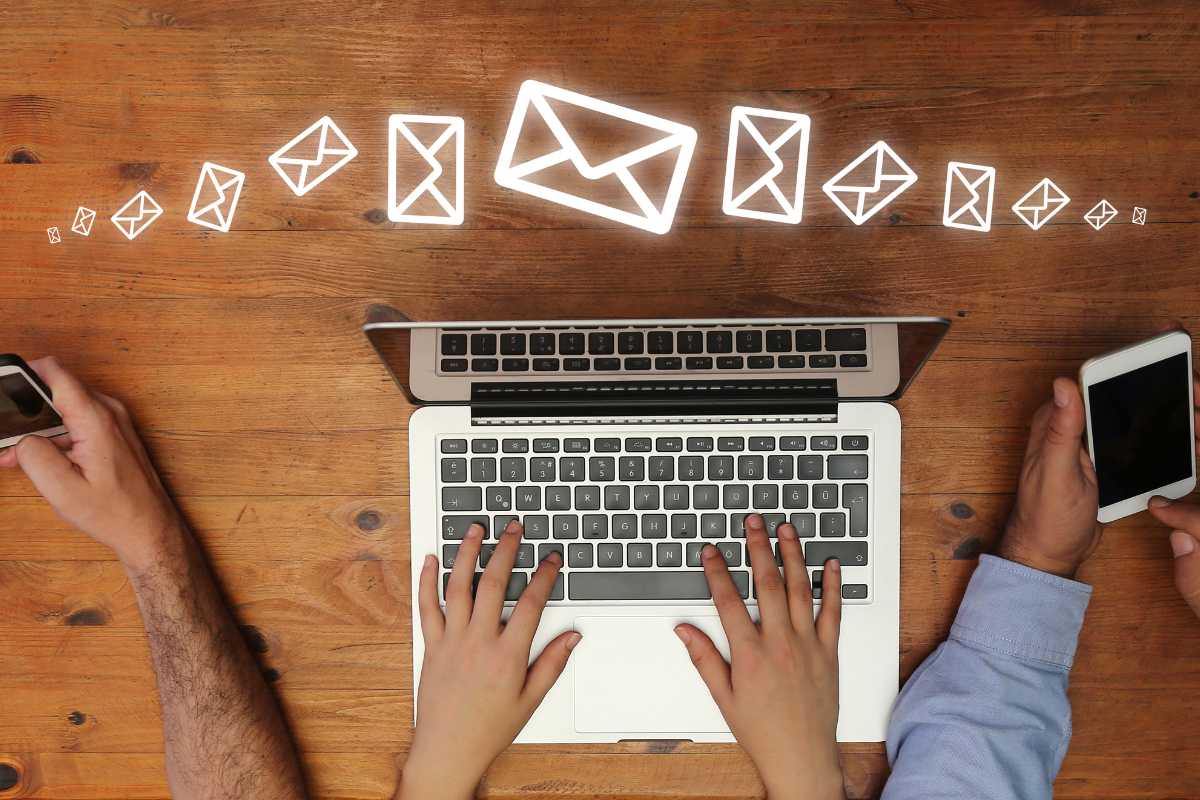Email is one of the world’s most preferred and used communication technology.
It’s been around since the 70s, yet it’s still growing.
How many people use email worldwide today?
It’s estimated that over 4 billion people in the world use email.
That represents more than half of the total world population.
While some people may believe that email is a dead and gone pastime, it’s still widely used for several purposes including professional, personal, and marketing communications.
Email is still an efficient and convenient way to stay connected with your family and friends as well as your customers and colleagues.
Email is a dynamic tool for businesses.
We will discuss how many people use email, who uses email the most, how it’s used, and more about email.
We will also find out what the future of email holds.
Let’s discuss email usage statistics.
Table of Contents
ToggleKey Statistics
- 4.37 billion people across the globe use email.
- 347.3 billion emails are sent per day.
- The average email user had 1.86 active email accounts in 2022.
- The email industry is expected to reach $73 billion (USD) by 2023.
- 65% of email users use Apple Mail.
- Gmail has more than 1.8 billion active users.
- Microsoft Outlook only has a 3.4% market share in the email sector.
- The age group using email the most at 93.6% is the 25 to 44 demographics.
- 53% of all sent emails are spam.
- 96% of consumers check their email daily.
Email Users: How Many People Use Email Worldwide?

1. 4.37 Billion People Across the Globe Use Email.
The number of worldwide email users is estimated to be 4.37 billion. In 2017, there were 3.71 billion email users.
In 2018, there were 3.82 billion email users and in 2022, there were 4.25 billion. By 2027, it’s expected that there will be 4.73 billion email users.
That shows that new email users have arisen in the last few years.
These figures represent a 2.3% increase per year.
(The Small Business Blog)
2. 347.3 Billion Emails Are Sent per Day.
Data shows that 347.3 billion emails are sent every day. Emails are sent at 3.137 million per second.
Between 2022 and 2023 reports showed that 333.2 emails were sent per day.
Additionally, it’s expected that by 2025, 376.4 billion emails will be sent per day.
This data shows us that email is not only not dead or antiquated, but is alive, well, and growing.
(99Firms)
3. The Average Email User Had 1.86 Active Email Accounts in 2022.
It was estimated that in 2022 the average email user had 1.86 active email accounts.
It’s not unusual for people to have multiple email accounts.
Some only have one personal and one business, but other people have an email account for a variety of uses.
(Oberlo)
4. The Email Industry Is Expected to Reach $73 Billion (USD) by 2023.
The email industry market is expected to reach $75 billion (USD) by the end of this year (2023).
The 2022 projections came to $64 billion, which was higher than the $55 billion figure from 2021 and the $47 billion figure from 2020.
(Startup Bonsai)
5. 65% of Email Users Use Apple Mail.
To send and receive emails you need an email provider, or email client.
Businesses often pay for an email client to have access to features free email can’t cover for their purposes.
However, overall, free email is great for personal email accounts.
The most used email client is Apple Mail, according to statistics.
(The Small Business Blog)
6. Gmail Has More than 1.8 Billion Active Users.

Google has Gmail which can be used for free or if a business wants its own email system, a paid version is available.
In 2018, Google reported that there were 1.5 billion Gmail email users.
It’s increased to 1.8 billion users since 2018. According to data, Google’s G Suite has over 2 billion users.
(99Firms)
7. Microsoft Outlook only Has a 3.4% Market Share in The Email Sector.
We mentioned that Apple Mail is the most used email client, but it also has an email user market share of 65% worldwide.
Google’s Gmail has a 24% market share and Microsoft Outlook is third with only 3.4% of the market share.
(Oberlo)
8. The Age Group Using Email the Most at 93.6% Is the 25 to 44 Demographics.
In terms of age, people between 25- and 44-years old account for 93.6% of email usage.
Keep in mind that this age group is likely made up of working adults or adults who own businesses.
The second largest email user group by age is the 45 to 64 crowd at 90.1%.
The 65+ group used email the least at 84.1%. Another 90% of people aged 15 to 24 use email.
(Startup Bonsai)
9. 53% of All Sent Emails Are Spam.
We have all experienced those spam emails that bombard out email accounts every day.
These spammers just don’t let up.
In fact, 53% of all sent emails are spam.
Even when you have a spam filter set on your email client, some of those spam emails still sneak through to your regular emails.
(The Small Business Blog)
10. 96% of Consumers Check Their Email Daily.

We found that 96% of consumers check their email daily.
Of all the billions of email users, most of them check their email every day.
This is another statistic that reveals the demand for email and that it’s not going anywhere.
Data even shows us that it’s still growing.
(99Firms)
FAQs
When Was Email Invented?
It’s believed that email was created by Ray Tomlinson, ARPANET contractor in 1972.
In fact, the very first email was sent between two computers in 1971.
There is another train of thought that 14-year-old named Shiva Ayyadurai developed email technology in 1978 for the University of Medicine and Dentistry in New Jersey.
What are CC and BCC in the Email Settings?
When sending an office email especially, you can include other recipients by using CC or BCC in the address to field.
CC stands for carbon copy and BCC stands for blind carbon copy.
If you want the sender to know who else is seeing the email you will add the recipient using CC.
However, if you want to keep others from knowing who else is seeing an email, use the BCC field.
These secondary email recipient fields are often used in business to keep others in the loop of a situation or information pertinent to their job.
What’s the Difference Between POP3 and IMAP?
The incoming email protocols are POP3 and IMAP.
POP3 is when email is downloaded from a mail service to another device and is deleted from the server.
Therefore, only a copy exists on the device to which it was downloaded.
The IMAP protocol saves and stores the email permanently on a server to be synced across devices when needed.
Conclusion
There has been some debate about whether email is antiquated or useful, but with the number of people using email and new users, it’s not looking so outdated.
Do you use email? If so, is it for personal professional, or marketing purposes?
No matter how you use your email, it’s a useful and essential communication tool.
In fact, we found that email is still used more than social media messaging.
While email barely beats social media messaging for communications, it’s still a win for email.
We hope you have a better understanding of email and how many people use email worldwide in 2023.











